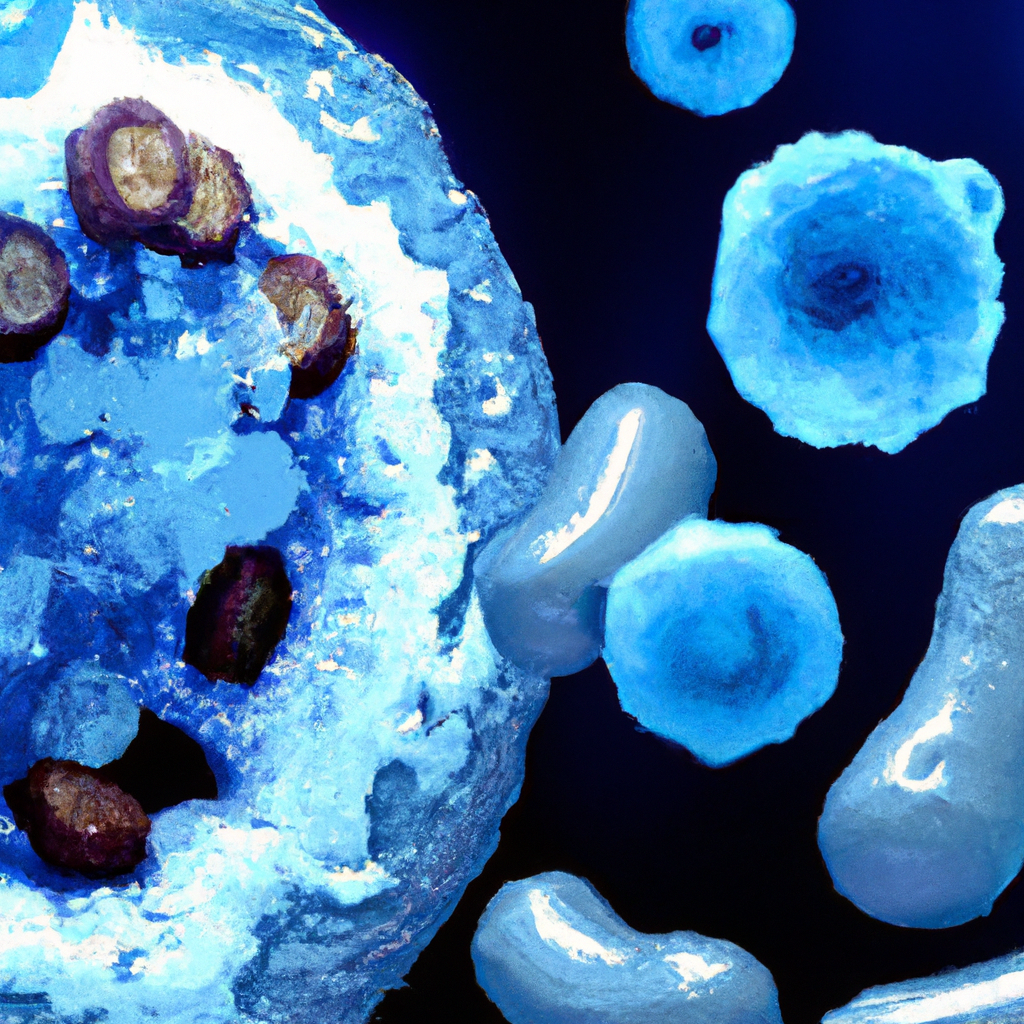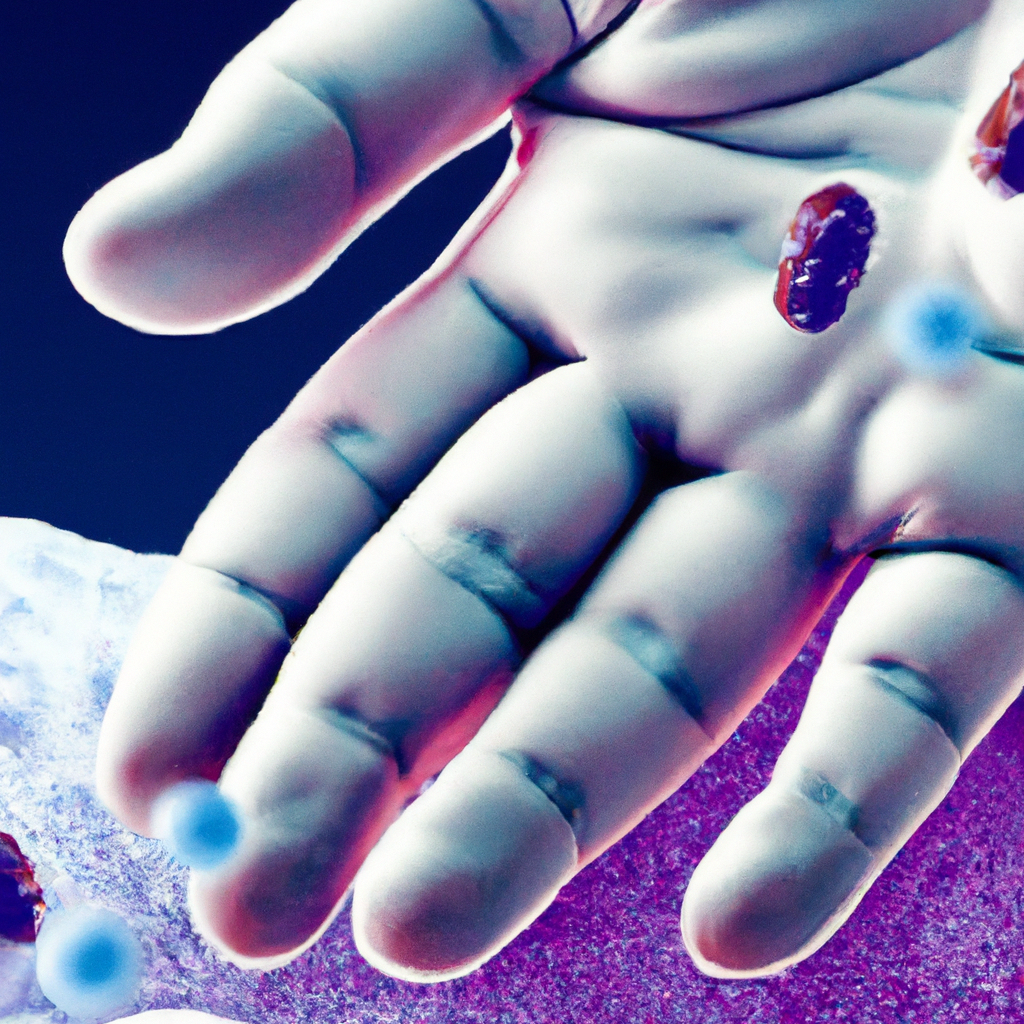Discover the groundbreaking applications of stem cells in treating diabetes in Malaysia. Gain insight into the various ways stem cells are being utilized to combat this widespread disease. From cutting-edge research to innovative treatments, explore how stem cells are changing the landscape of diabetes care. Delve into the potential benefits and challenges of this emerging field, and learn how Malaysia is at the forefront of this medical revolution. Embark on a journey to understand the potential of stem cells in transforming the lives of individuals affected by diabetes.

Understanding Diabetes
Diabetes is a chronic condition that affects the way your body uses glucose, a type of sugar that serves as a fuel for your cells. There are several types of diabetes, including Type 1, Type 2, and Gestational diabetes.
Types of diabetes
Type 1 diabetes, also known as juvenile diabetes, is an autoimmune disease where the body’s immune system mistakenly attacks and destroys the insulin-producing cells in the pancreas. This results in the inability of the body to produce insulin, leading to high blood sugar levels.
Type 2 diabetes is the most common form of diabetes and usually occurs in adulthood. It is characterized by insulin resistance, where the body’s cells become resistant to the effects of insulin. This leads to inadequate insulin production and high blood sugar levels.
Gestational diabetes occurs in pregnant women who have high blood sugar levels. This condition usually resolves after giving birth, but women who have had gestational diabetes have a higher risk of developing Type 2 diabetes later in life.
Prevalence of diabetes in Malaysia
Diabetes is a significant public health issue in Malaysia, with an increasing prevalence over the years. According to the Malaysian National Health and Morbidity Survey 2019, approximately 3.9 million Malaysians aged 18 years and above have diabetes. This equates to 18.3% of the adult population in Malaysia.
The high prevalence of diabetes in Malaysia can be attributed to various factors, including sedentary lifestyles, an unhealthy diet, obesity, and genetic predisposition. It is crucial to address this growing problem and explore innovative approaches to managing and treating diabetes effectively.
Challenges in treating diabetes
Managing diabetes involves a combination of lifestyle modifications, medication, and regular monitoring of blood sugar levels. However, there are several challenges in effectively treating diabetes.
One challenge is achieving and maintaining optimal blood sugar control. This requires regular monitoring of blood glucose levels, adherence to a healthy diet and exercise regime, and appropriate medication. However, it can be challenging for individuals to make long-term lifestyle changes and comply with treatment regimens.
Another challenge is the risk of complications associated with diabetes. Poorly controlled diabetes can lead to various complications, including cardiovascular disease, kidney disease, nerve damage, and vision problems. The management and treatment of these complications add to the burden of diabetes care.
Given the challenges in managing diabetes and the increasing prevalence of the disease, there is a need for innovative treatments that can provide long-lasting and effective solutions. One emerging area of research and potential therapy for diabetes is stem cell therapy.
Introduction to Stem Cells
Stem cells are undifferentiated cells that have the remarkable ability to develop into different cell types in the body. They can divide and produce more stem cells or differentiate into specialized cells, such as muscle cells, nerve cells, or insulin-producing cells.
Definition of stem cells
Stem cells are characterized by two essential properties: self-renewal and potency. Self-renewal refers to the ability of stem cells to divide and produce more stem cells, ensuring a constant supply. Potency refers to the capacity of stem cells to differentiate into different cell types.
There are two main types of stem cells: embryonic stem cells and adult stem cells. Embryonic stem cells are derived from embryos and can differentiate into any cell type in the body. Adult stem cells are present in various tissues and organs throughout the body and are involved in tissue maintenance and repair.
Types of stem cells
There are several types of stem cells, each with its distinct characteristics and potential applications.
Embryonic stem cells, as the name suggests, are derived from embryos. These cells are pluripotent, meaning they have the ability to differentiate into any type of cell in the body. This unique characteristic makes embryonic stem cells a valuable resource for research and potential therapeutic applications.
Adult stem cells are found in different tissues and organs, such as the bone marrow, adipose tissue, and blood. These stem cells play a crucial role in maintaining and repairing the tissues they reside in. They are multipotent, meaning they have the ability to differentiate into a limited number of cell types.
Induced pluripotent stem cells (iPSCs) are a recent discovery in the field of stem cell research. iPSCs are adult cells that have been reprogrammed to behave like embryonic stem cells. By introducing specific genes into these adult cells, researchers can turn back the clock and reprogram them into a pluripotent state.
Characteristics of stem cells
Stem cells possess unique characteristics that make them invaluable in research and potential therapeutic applications. The characteristics of stem cells include self-renewal, potency, and plasticity.
Self-renewal refers to the ability of stem cells to divide and produce more stem cells, ensuring a constant supply. This property is essential in maintaining a pool of stem cells for future use.
Potency refers to the capacity of stem cells to differentiate into different cell types. Stem cells can differentiate into specialized cells, including muscle cells, blood cells, nerve cells, and insulin-producing cells.
Plasticity is another crucial characteristic of stem cells. It refers to the ability of stem cells to change their fate or differentiate into cell types different from their lineage. This property opens up possibilities for reprogramming and manipulating stem cells to serve specific purposes.
Stem Cell Therapy for Diabetes
Stem cell therapy for diabetes is a promising approach that aims to replace the damaged or destroyed insulin-producing cells in the pancreas. By introducing healthy stem cells or their derivatives into the body, this therapy seeks to restore the normal production of insulin and regulate blood sugar levels.
Overview of stem cell therapy for diabetes
Stem cell therapy for diabetes involves the transplantation of stem cells or their derivatives into the pancreas or other parts of the body. These transplanted cells have the potential to differentiate into insulin-producing cells, thereby restoring the body’s ability to regulate blood sugar levels effectively.
The ultimate goal of stem cell therapy for diabetes is to provide a long-term and sustainable solution for individuals with diabetes. Instead of relying on daily insulin injections or oral medications, stem cell therapy aims to address the root cause of the disease and restore normal pancreatic function.
Advantages of using stem cells
There are several advantages to using stem cells in the treatment of diabetes.
Firstly, stem cells have the potential to differentiate into insulin-producing cells. This means that they can replace the damaged or destroyed cells in the pancreas that are responsible for insulin production. By doing so, stem cells can restore the body’s natural ability to regulate blood sugar levels.
Secondly, stem cells have the ability to self-renew. This means that once transplanted into the body, they can continuously produce new insulin-producing cells, ensuring a sustainable and long-term solution for individuals with diabetes.
Thirdly, stem cells have the potential to modulate the immune response. Diabetes is an autoimmune disease characterized by the immune system attacking the insulin-producing cells in the pancreas. By modulating the immune response, stem cells can prevent further damage to the pancreatic cells and improve the success of transplantation.
Clinical trials and research studies
Stem cell therapy for diabetes is still in the early stages of development, but there have been promising results from preclinical and clinical studies.
In preclinical studies, researchers have successfully generated insulin-producing cells from stem cells and transplanted them into animal models of diabetes. These studies have shown that the transplanted cells can survive and function in the diabetic animals, leading to improved blood sugar control.
In clinical trials, stem cell therapy has shown potential in improving blood sugar control in individuals with diabetes. These trials have involved the transplantation of stem cells or their derivatives into the pancreas or other sites in the body. Although the results are still preliminary, they provide hope for the future of stem cell therapy for diabetes.
It is important to note that stem cell therapy for diabetes is still undergoing extensive research and development. Further studies are needed to optimize the techniques, ensure long-term safety and effectiveness, and establish the best protocols for transplantation.
Potential Sources of Stem Cells
Stem cells can be derived from various sources, each with its advantages and limitations. The choice of stem cell source depends on factors such as availability, ethical considerations, and the desired cell types for transplantation.
Embryonic stem cells
Embryonic stem cells (ESCs) are derived from embryos during the early stages of development. These cells are considered pluripotent, meaning they have the ability to differentiate into any type of cell in the body.
The use of embryonic stem cells in research and therapy is a topic of ethical debate, as their derivation involves the destruction of embryos. However, advancements in technology have allowed researchers to generate induced pluripotent stem cells (iPSCs) from adult cells, offering an alternative source of pluripotent stem cells without the ethical concerns.
Adult stem cells
Adult stem cells are present in various tissues and organs throughout the body. These stem cells play a crucial role in tissue maintenance and repair.
The advantage of using adult stem cells is their availability and accessibility. These cells can be obtained from easily accessible sources such as the bone marrow, adipose tissue (fat), and blood.
Adult stem cells are multipotent, meaning they have the ability to differentiate into a limited number of cell types. For example, mesenchymal stem cells (MSCs) derived from the bone marrow or adipose tissue can differentiate into various cell lineages, including insulin-producing cells.
Induced pluripotent stem cells
Induced pluripotent stem cells (iPSCs) are adult cells that have been reprogrammed to behave like embryonic stem cells. This reprogramming process involves introducing specific genes into the adult cells, turning them back into a pluripotent state.
The advantage of using iPSCs is that they offer a patient-specific approach to stem cell therapy. By reprogramming the patient’s own cells into pluripotent stem cells, potential issues of rejection or immune response can be minimized.
However, the generation of iPSCs involves complex and time-consuming techniques. Further research is needed to optimize the reprogramming process and ensure the safety and effectiveness of iPSC-derived cells for transplantation.

Methods of Stem Cell Delivery
The successful delivery of stem cells to the target tissue or organ is critical for the efficacy of stem cell therapy. Various techniques for delivering stem cells have been explored, each with its advantages and limitations.
Different techniques for delivering stem cells
The choice of stem cell delivery technique depends on factors such as the type of stem cells, the target tissue, and the desired therapeutic outcome.
Direct injection is a common method of stem cell delivery, where the stem cells are injected directly into the target tissue or organ. This method allows for precise localization of the stem cells and can be used for both local and systemic delivery.
Encapsulation is another approach to stem cell delivery, where the stem cells are encapsulated within biomaterials or devices before transplantation. These encapsulated cells can provide a controlled release of therapeutic factors and protection from the immune system, improving their survival and function.
Intravenous infusion involves the injection of stem cells into the bloodstream. This method allows for systemic distribution of the stem cells, reaching different organs and tissues throughout the body. Intravenous infusion is non-invasive and can be used for the delivery of various types of stem cells.
Intravenous infusion
Intravenous infusion is a common method of stem cell delivery for various therapeutic purposes, including diabetes. This technique involves injecting stem cells into the bloodstream, allowing for their distribution to different organs and tissues.
In the context of diabetes, intravenous infusion of stem cells aims to improve blood sugar control by promoting the regeneration of insulin-producing cells in the pancreas.
Studies have shown that intravenous infusion of stem cells can improve blood sugar control in animal models of diabetes. These stem cells can migrate to the pancreas and differentiate into insulin-producing cells, leading to increased insulin production and improved glucose metabolism.
Further research is needed to optimize the technique of intravenous infusion for stem cell therapy in diabetes and to ensure the safety and efficacy of this delivery method.
Pancreatic transplantation
Pancreatic transplantation is a surgical procedure that involves replacing the entire pancreas or parts of it, including the insulin-producing cells, with a healthy pancreas from a donor. This procedure can be performed alone or in conjunction with kidney transplantation, as diabetes is a common complication of kidney disease.
Pancreatic transplantation provides a direct and localized delivery of healthy insulin-producing cells to the pancreas, offering a potential cure for Type 1 diabetes. The transplanted pancreas can restore the normal production of insulin and regulate blood sugar levels effectively, eliminating the need for insulin injections.
However, pancreatic transplantation is a complex procedure that requires a suitable donor and the use of immunosuppressive medications to prevent rejection of the transplanted organ. The availability of donor organs is limited, and there are risks associated with the surgery and long-term use of immunosuppressive drugs.
Differentiation of Stem Cells into Insulin-Producing Cells
The successful differentiation of stem cells into insulin-producing cells is a crucial step in stem cell therapy for diabetes. This process involves reprogramming the stem cells to behave like pancreatic beta cells, which are responsible for insulin production.
Challenges in differentiating stem cells
The differentiation of stem cells into insulin-producing cells is a complex process that involves mimicking the natural development of pancreatic beta cells. Researchers face several challenges in achieving this differentiation effectively.
One challenge is replicating the intricate molecular and cellular events that occur during pancreatic development. Understanding the precise signaling pathways and genetic factors involved in beta cell development is essential for guiding the differentiation of stem cells into functional insulin-producing cells.
Another challenge is ensuring the purity and functionality of the differentiated cells. For stem cell therapy to be successful, the transplanted cells must be able to produce insulin in response to changes in blood glucose levels. Researchers are working to optimize the differentiation protocols to improve cell purity and functionality.
Factors influencing differentiation
The differentiation of stem cells into insulin-producing cells is influenced by various factors, including growth factors, signaling molecules, and environmental cues.
Key growth factors involved in beta cell differentiation include activin A, transforming growth factor-beta (TGF-beta), and fibroblast growth factor (FGF). These growth factors act in a coordinated manner to drive the differentiation of stem cells towards the beta cell lineage.
Signaling molecules such as Notch, Wnt, and Hedgehog also play crucial roles in beta cell differentiation. These signaling pathways help regulate gene expression and cellular processes, guiding the stem cells towards the beta cell fate.
Environmental cues, such as oxygen levels and physical factors, can also influence the differentiation of stem cells into insulin-producing cells. Oxygen levels, for example, can affect the maturation and functionality of the beta cells, while physical factors like substrate stiffness can impact cell behavior and gene expression.
Manipulating stem cells to produce insulin
Researchers have made significant progress in manipulating stem cells to produce insulin. By precisely controlling the differentiation process, they can guide stem cells towards the beta cell lineage and promote their maturation and functionality.
Several approaches have been explored to improve the yield and functionality of insulin-producing cells derived from stem cells.
Genetic engineering involves introducing specific genes into the stem cells to enhance their differentiation into insulin-producing cells. For example, researchers have successfully used the transcription factors Pdx1, Ngn3, and MafA to drive the differentiation of stem cells toward the beta cell lineage.
Epigenetic modifications can also influence the differentiation process. Modifications to DNA and histones can regulate gene expression and cellular processes, playing a role in the maturation and functionality of the insulin-producing cells.
Furthermore, advances in tissue engineering and biomaterials have allowed researchers to create three-dimensional culture systems that mimic the natural pancreatic environment. These systems provide physical support and create a microenvironment that promotes the differentiation and maturation of stem cells into insulin-producing cells.

Regeneration and Repair in Diabetes
One of the potential benefits of stem cells in diabetes therapy is their ability to regenerate and repair damaged tissues. Stem cells have the capacity to promote cell survival and proliferation, stimulate tissue repair, and induce angiogenesis.
Mechanisms of stem cell regeneration
Stem cell regeneration in the context of diabetes involves the replacement of damaged or destroyed pancreatic beta cells. By introducing stem cells or their derivatives into the pancreas, researchers aim to stimulate the regeneration of insulin-producing cells and restore normal pancreatic function.
The regenerative properties of stem cells are attributed to their ability to differentiate into the desired cell types and produce factors that promote cell survival, proliferation, and tissue repair.
Promoting cell survival and proliferation
Stem cells can secrete various growth factors and cytokines that promote the survival and proliferation of pancreatic beta cells.
Factors such as vascular endothelial growth factor (VEGF) and insulin-like growth factor (IGF) can protect beta cells from apoptosis (cell death) and stimulate their growth and replication.
Furthermore, stem cells can secrete factors that modulate the immune response and reduce inflammation in the pancreas. This anti-inflammatory effect can create an environment that promotes cell survival and tissue repair.
Tissue repair and angiogenesis
Stem cells have the ability to induce tissue repair and angiogenesis, which can contribute to the regeneration of damaged pancreatic tissue in diabetes.
Tissue repair involves the recruitment and differentiation of stem cells into the desired cell types, such as insulin-producing cells. This process can help replace the damaged or destroyed beta cells and restore the normal function of the pancreas.
Angiogenesis, on the other hand, refers to the formation of new blood vessels. In diabetes, impaired blood flow and angiogenesis contribute to the dysfunction and damage of pancreatic beta cells. Stem cells can secrete factors that promote angiogenesis, improving blood flow and nutrient supply to the pancreas, and facilitating the regeneration of beta cells.
These regenerative properties of stem cells make them an attractive therapeutic option for diabetes, as they have the potential to restore the normal function of the pancreas and provide a long-lasting solution for individuals with diabetes.
Immunomodulation by Stem Cells
In addition to their regenerative properties, stem cells can also modulate the immune response, which is a crucial aspect of diabetes therapy. Diabetes is an autoimmune disease characterized by the immune system attacking the insulin-producing cells in the pancreas. The ability of stem cells to modulate the immune response can help address this autoimmune component and improve the success of transplantation.
Modulating the immune response
Stem cells have immunomodulatory properties, meaning they can modulate the activity of the immune system. These properties can help regulate the immune response in diabetes and prevent further damage to the insulin-producing cells.
Stem cells can secrete factors that suppress the activity of immune cells, such as T cells and macrophages. This suppression can prevent the immune cells from attacking the insulin-producing cells and improve the survival and function of these cells.
Furthermore, stem cells can promote the activity of regulatory immune cells, such as regulatory T cells and regulatory B cells. These cells play a role in maintaining immune tolerance and preventing autoimmune responses.
Reducing inflammation
Inflammation is a hallmark of diabetes and can contribute to the dysfunction and destruction of pancreatic beta cells. Stem cells have anti-inflammatory properties and can secrete factors that reduce inflammation in the pancreas.
By reducing inflammation, stem cells can create a favorable environment for the survival and function of beta cells. This anti-inflammatory effect can also modulate the immune response and prevent further damage to the insulin-producing cells.
Preventing rejection of transplanted cells
In the context of stem cell therapy for diabetes, the modulation of the immune response is essential to prevent rejection of the transplanted cells.
Stem cells can express immune-modulatory molecules on their surface, which can help evade recognition and attack by the immune system. This ability to avoid immune detection can improve the survival and engraftment of transplanted stem cells.
Furthermore, stem cells can promote the generation of regulatory immune cells, such as regulatory T cells. These regulatory cells can suppress immune responses and prevent rejection of the transplanted cells, improving the success and long-term outcomes of stem cell therapy.
The immunomodulatory properties of stem cells make them an attractive option for diabetes therapy, as they can not only promote tissue regeneration but also modulate the immune response and prevent further damage to the pancreatic cells.

Current Status of Stem Cell Therapy in Malaysia
Stem cell therapy for diabetes is an emerging field of research and therapy in Malaysia. Although it is still in the early stages of development, there have been significant advancements and promising results in both preclinical and clinical studies.
Availability of stem cell therapy
Stem cell therapy for diabetes is not yet widely available in Malaysia. As it is still considered an experimental treatment, access to stem cell therapy is limited to research studies, clinical trials, and specialized healthcare centers.
However, with the increasing prevalence of diabetes in Malaysia and the potential benefits of stem cell therapy, it is likely that the availability of this therapy will expand in the future. Ongoing research and clinical trials are aimed at optimizing the techniques and protocols for stem cell therapy and establishing its safety and efficacy.
Regulatory framework
The use of stem cells for therapeutic purposes is regulated by various regulatory bodies in Malaysia, including the Ministry of Health (MOH) and the National Pharmaceutical Regulatory Agency (NPRA). These bodies ensure that the use of stem cells is guided by ethical and safety considerations and that the therapies are based on sound scientific evidence.
Stem cell therapy in Malaysia must undergo rigorous testing and evaluation before it can be approved for clinical use. Clinical trials and research studies are conducted to assess the safety and effectiveness of stem cell therapies, and these findings inform the regulatory decisions regarding the approval and use of these therapies.
The regulatory framework for stem cell therapy in Malaysia is designed to protect the interests of patients and ensure that they have access to safe and effective treatments. It also promotes the development of innovative therapies and fosters collaboration between researchers, clinicians, and regulatory bodies.
Cost and accessibility
The cost and accessibility of stem cell therapy in Malaysia can vary depending on several factors, including the type of stem cells used, the mode of delivery, and the healthcare provider. As stem cell therapy for diabetes is still in the early stages of development, it may not be widely covered by insurance or available in all healthcare centers.
The cost of stem cell therapy can be a barrier for some individuals, as it may involve multiple treatments and long-term follow-up. However, ongoing research and advancements in stem cell technology may eventually lead to more cost-effective and accessible therapies.
It is important for individuals considering stem cell therapy to consult with their healthcare provider and discuss the potential benefits, risks, and costs associated with the treatment. Only through proper evaluation and consultation can individuals make informed decisions about the suitability and affordability of stem cell therapy for their diabetes.
Challenges and Ethical Considerations
While stem cell therapy holds great promise for the treatment of diabetes, there are several challenges and ethical considerations that need to be addressed.
Ethical concerns surrounding stem cell research
The use of embryonic stem cells in research and therapy raises ethical concerns due to the destruction of embryos. The derivation of embryonic stem cells involves the destruction of early-stage embryos, which some consider to be a violation of the sanctity of life.
To address these ethical concerns, researchers have explored alternative sources of pluripotent stem cells, such as induced pluripotent stem cells (iPSCs). iPSCs are derived from adult cells and offer a patient-specific approach to stem cell therapy, minimizing ethical concerns associated with the use of embryonic stem cells.
The ethical considerations surrounding stem cell research and therapy require careful deliberation and regulation. It is essential to strike a balance between advancing scientific knowledge and respecting ethical boundaries, ensuring that stem cell research and therapy are conducted in an ethical and responsible manner.
Safety and long-term effects
The safety of stem cell therapy is a crucial consideration in the development and implementation of these therapies. While stem cells offer great potential in regenerative medicine, there are risks associated with their use, including the potential for tumor formation and immune rejection.
To ensure the safety of stem cell therapy, extensive preclinical and clinical studies are conducted to assess the efficacy, safety, and long-term effects of these therapies. The findings from these studies inform the development of guidelines and protocols for the safe use of stem cells.
The long-term effects of stem cell therapy in diabetes are still being investigated. Long-term follow-up and monitoring are necessary to assess the durability and sustainability of the therapeutic effects and to identify any potential long-term complications.
Public perception and acceptance
Stem cell therapy is a rapidly evolving field of research and therapy, and public perception and acceptance of these therapies play a crucial role in their implementation and adoption.
Public perception of stem cell therapy for diabetes can be influenced by various factors, including media coverage, regulatory decisions, and advocacy efforts. It is important for the public to have accurate and balanced information about stem cell therapy, including its potential benefits, risks, and limitations.
Education and awareness campaigns can help address misconceptions and promote understanding of stem cell therapy. By providing accurate and evidence-based information, individuals can make informed decisions about stem cell therapy and participate in discussions about its ethical, legal, and societal implications.
In conclusion, stem cell therapy holds great promise for the treatment of diabetes in Malaysia. Stem cells have the ability to differentiate into insulin-producing cells, regenerate damaged tissues, modulate the immune response, and stimulate angiogenesis. However, there are challenges that need to be addressed, including the optimization of differentiation protocols, safety considerations, and ethical concerns. Ongoing research and clinical trials will contribute to the development and refinement of stem cell therapy, ensuring that it is safe, effective, and accessible for individuals with diabetes in Malaysia.





